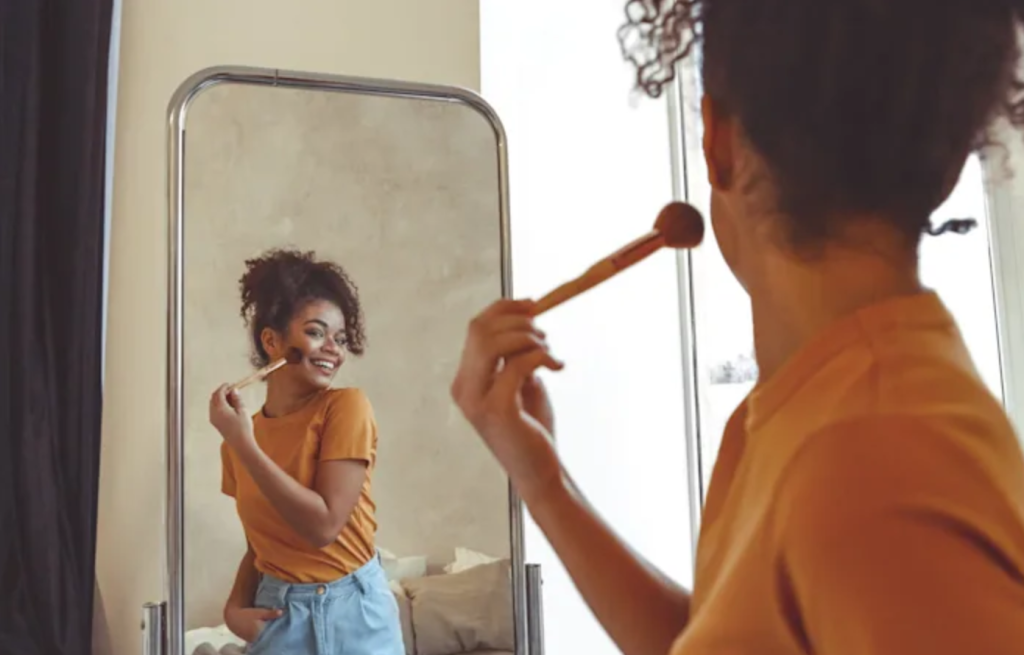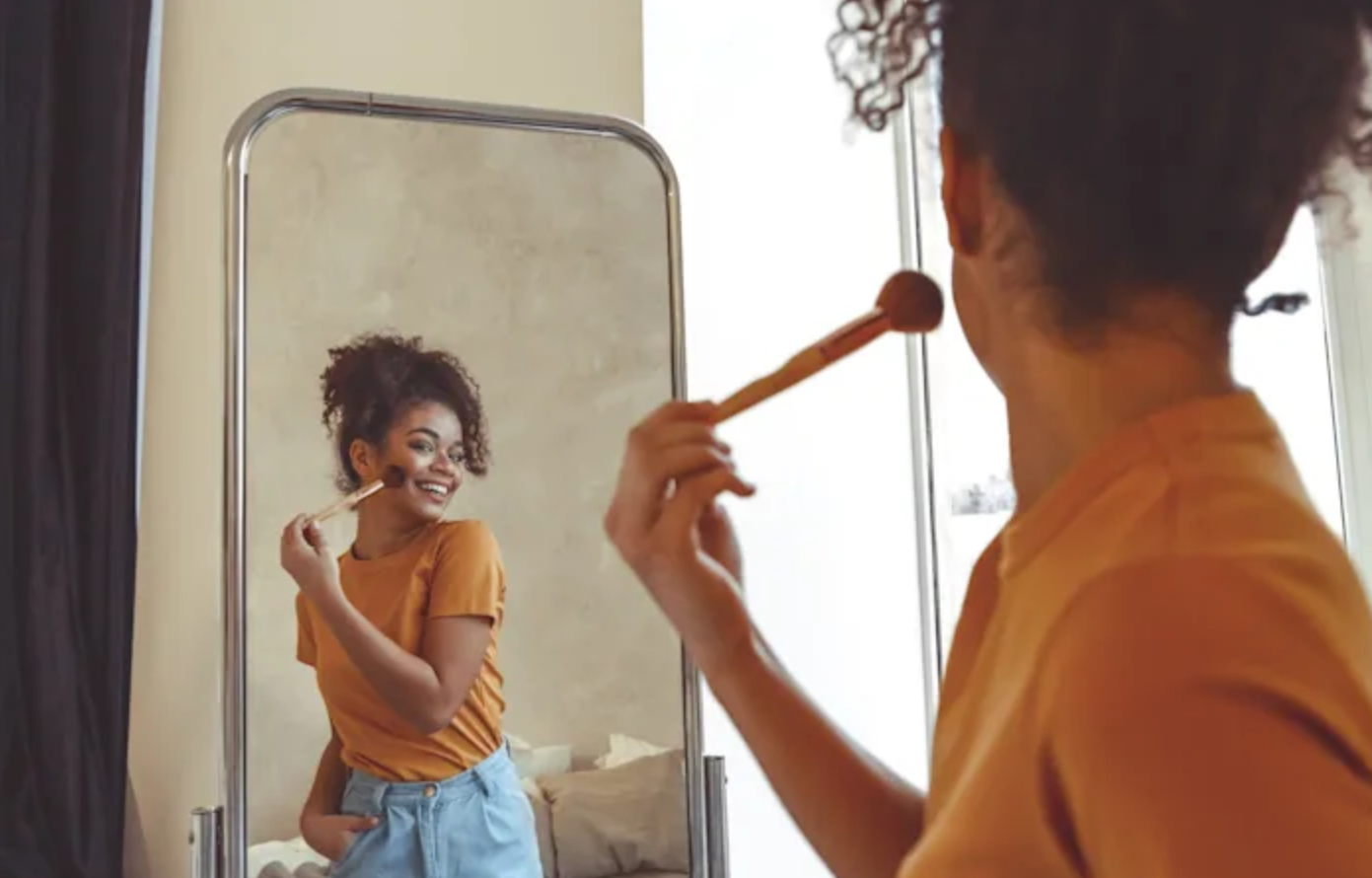
Blush is a classic and very common step in the daily makeup process – from the every day look to the totally glamorous – but this can lead to it being overlooked or even taken for granted. We sometimes forget that a single brush of blush can instantly highlight your facial features or brighten your face, and that there’s a lot more to the blush technique than you might expect. What’s more, each skin type, texture and tone has properties that are best suited for blush application.
From lifting your cheekbones to making your skin look like the sun without UV rays, even just a slight blush can make a huge impact. Here, a professional makeup artist has put together a set of things to remember for your daily makeup routine.
First, a note on blush formulas
“There are three main textures of blush:cream, liquid and classic foundation,” makeup artist and salon owner Ivy Ry tells POPSUGAR. “Creams are more forgiving and you can wash them off more easily than liquid blushes and blushes.” Both Ry and makeup artist Romana Lai, founder of Romana makeup New York, say that applying blush with your fingers works best. Preheating the blush to “hand temperature” helps make it easier to apply.
With liquid blush, which is less dense than cream blush, a common mistake is to let it leave little fingerprints on your cheeks before you have a chance to smooth it out. To keep the blush consistent, a brush called a stippling brush can help it apply smoothly and evenly on your cheeks. “They’re great because you can remove the blush more easily,” Ry says. For powder blush, the brush is also key, “It should be a round brush and make sure it’s very soft,” Ry says.
She adds that she usually avoids powder blushes on a daily basis, especially in warm weather, because powder blushes can get messy. “Powder blush usually doesn’t last, especially in the summer when you’re sweating. The blush just disappears.”
Tip 1: Choose blush according to your skin type
Knowing your individual skin type and skin tone – aside from which blush is best for blush – is probably the most important aspect of your routine. Here are some suggestions for specific skin types:
For sensitive skin: “Almost all people with sensitive skin have redness,” says Lai. “So usually, the color won’t show unless you mask or correct it first. I’ll do a little color correction to remove the redness under my skin tone and apply foundation to make sure I have an even skin tone.” Using a green toning formula before applying blush, or just using a highly tinted concealer, can help cover any redness.
For acne-prone skin:While you don’t want to use too much makeup for fear of clogging your pores, there are a few things to remember if you use too much makeup. “(Acne-prone) skin tends to have a lot of oil, so I recommend using a powder blush because you don’t want to add an oil-based product on top of the oil,” Lai says. Flash powder blushes also often highlight acne, so sticking to a scrub may be the best option, she says.
For oily skin:Creamy multifunctional products are best for people with oily skin. says Ry: “They’re designed to be used on all areas, and some of them are (often) more oily than others.”
For different skin tones:If you have a bronze or olive complexion, “I would use more bronzer, brown or peach to match your skin tone,” says Ry. For darker skin tones, consider choosing powder or liquid formulas, which tend to be more pigmented than creams and therefore more likely to give a darker skin tone. “I would go for a berry or orange color,” Rai says. For fair skin, sometimes lighter colors can be difficult to show, so Rae suggests using a pink with blue undertones. Ultimately, however, it all comes down to personal preference: “It’s just the makeup rules they teach them,” Ry says. “If you have a color you like and you think it looks good on you, then stick with it.”
Tip 2: Consider the occasion when choosing blush
While there is no set rule on how we should wear makeup for a particular occasion, it helps to think about where you’re going and what the occasion is to optimize the look of your blush. If you only have five to 10 minutes in the morning, “I like to apply blush with my fingers,” Lai says. “I only use pink blush, and I can wear blush and lip gloss at the same time. But if I’m going to a really formal event and I want to wear heavy makeup, I’ll take the time to fix the blush. So it depends on what type of event and how much time you have.”
In everyday life, a little blush glow can add brightness to your skin. “Creams are mostly oil-based, so they’ll give you a natural glow and shine that everyone likes to feel every day,” Ry says. Be aware that this light reflection is not the best if you’re going on camera or taking pictures for a big event. Using liquid or powder pigments with brighter, more saturated colors can help your makeup stand out for these occasions. “The lighting on the camera is much more intense,” says Lai, “so the colors in everything have to be more intense.”
For longer periods of time, you’ll want to choose a blush or two to help it last. ry says: “For longer life, use a blush first, then a powder blush, which will extend the makeup time.”
Tip 3: Build your foundation
“When you apply blush, you need to have your foundation ready,” Ry says. This means wearing foundation or moisturizer before you blush. For everyday life, Ry recommends using a simple light foundation, but when you need to wear heavy makeup, she suggests using a full foundation. “To look more glamorous, I also add contouring and highlighting, apply a light foundation under my eyes, and a dark foundation on my chin before blush.”
Your preparation can also depend on the blush formula you choose. “If you’re using a cream blush or liquid blush, don’t use foundation before that,” Ry says. “But if you’re using a powder blush, you should powder the foundation first so it doesn’t smudge.”
Tip 4: Use blush in good light
The lighting you use when you apply your makeup is crucial to your look. This is true, especially for the shimmering blush look: “If you’re in the dark, you won’t see the metal,” says Lai. “So when you’re using a metallic blush product, make sure you’re in good light, find a good spot and make sure you’re not applying too much.”
Applying makeup near a window will allow you to work in natural light. If you don’t have much natural light in your space, buying an inexpensive ring light clip on your mirror will work.
Tip 5: Adjust your blush application technique
It’s not just the type of blush you use that matters, how you use your blush can also have a big impact.
Not only does the type of blush you use matter, but how you use it can also have a big impact. You can create a myriad of different looks, and these looks can enhance your features in different ways simply by using application techniques. If you have a long or googly face, you can apply blush under your cheekbones to make your face look more rounded. If you have a round face, you can keep the blush on your cheekbones and pull it upward to your temples. For more definition, apply bronzer to the hollows of the cheeks and right below the jawline.
To create an “upturned” look, Rai has a suggestion: instead of making a circular motion on the apples of the cheeks, make a downward motion, outward and upward to the temples. This will accentuate the cheekbones and give a youthful glow.
No matter what kind of blush you want, with the right tools, recipes and practice, you’ll know which blush is best for your skin and needs. “For me, makeup is more of a balance,” says Lai. “Your skin is like a piece of paper, so you have to balance each product to achieve the look you want. Makeup is totally dependent on your taste and your understanding of color. It’s like art.”


